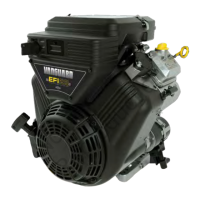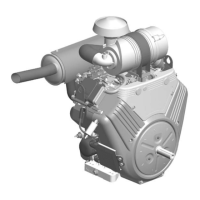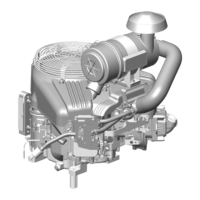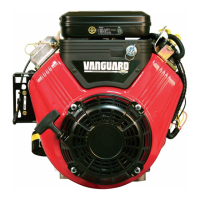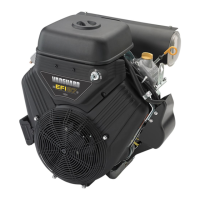6 Section 1: Diagnostic Introduction
IMPORTANT:
• Use care to avoid deforming connector
terminals, either by forcing the probe too far
into the cavity or by using a probe that is too
large. If terminal damage is suspected, test
for proper terminal contact.
• A deformed terminal can cause a poor
connection resulting in intermittent problems
or even complete component failure. Do not
use paper clips or other substitute devices
as they also can damage terminals.
• Do not probe through connector seals, wire
insulation, secondary ignition wires, boots,
etc. Damage can occur that is not readily
apparent and tiny holes can result in water
intrusion, which leads to corrosion and
eventual component failure.
Avoiding ECM Damage
CAUTION: A surge in voltage, current
or both, is called a voltage spike. Voltage
spikes can cause major damage to the ECM.
1. To avoid ECM failure due to accidentally
induced voltage spikes, always observe the
following precautions:
• Do not start engine if battery cable
connections are loose.
• Do not use a battery charger to start engine.
• Turn Ignition OFF before disconnecting and/
or connecting battery cables.
• When disconnecting battery, always
disconnect battery negative (-) cable fi rst.
• When connecting battery, always connect
battery positive (+) cable fi rst.
• When charging battery, turn Ignition OFF
and remove battery negative cable (black)
from battery negative (-) terminal.
2. Do not spray water at or around ECM.
NOTE: See Figure 1-3. A pin hole centered
under the adhesive label is used in manufac-
turing to determine the integrity of the potted
seal. If the label peels or becomes torn, worn
or abraded, exposure of the hole can allow
water or moisture to intrude, leading to corro-
sion and eventual ECM failure.
Figure 1-3 Protect ECM From Water Intrusion.
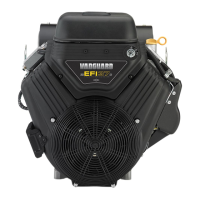
